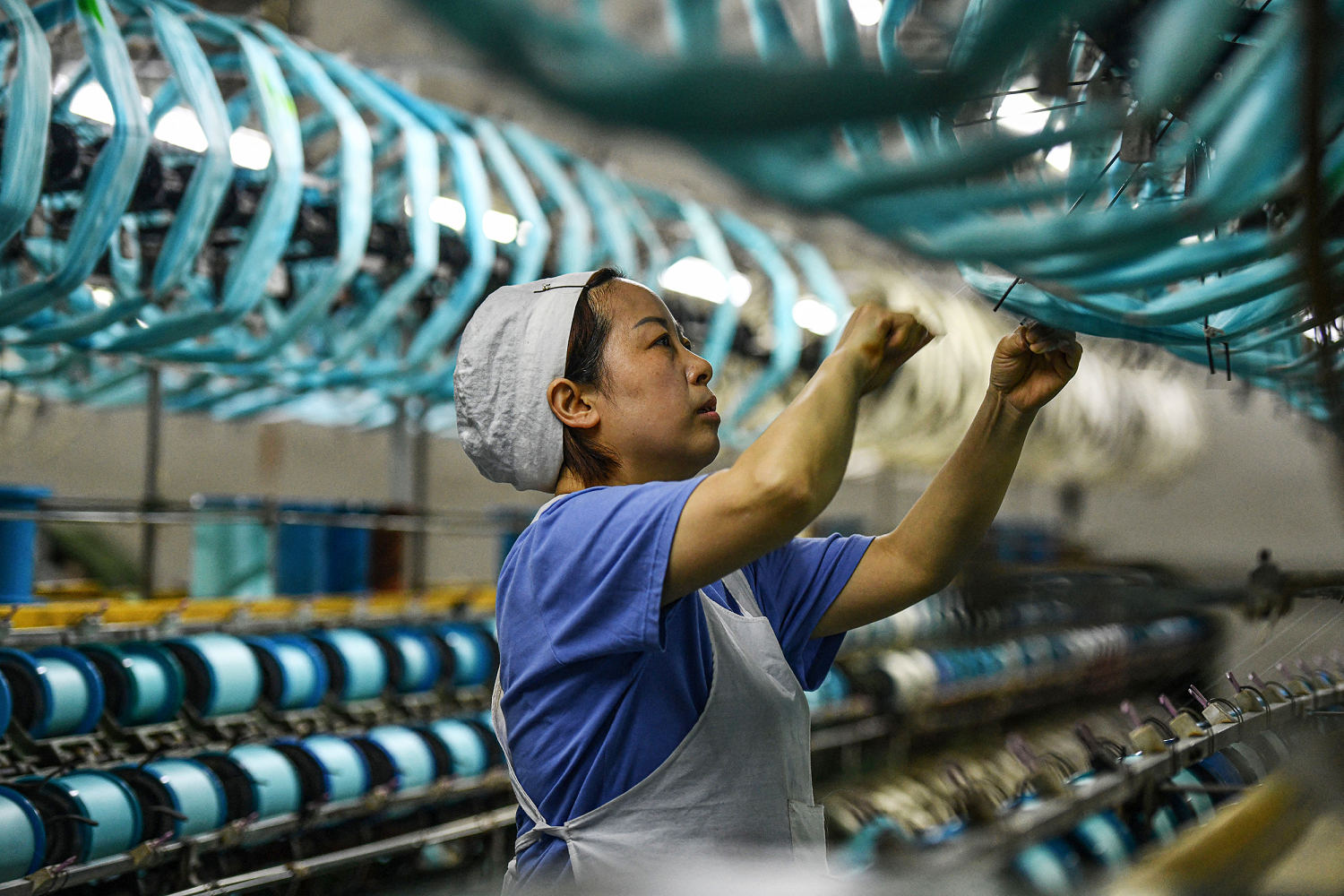

China’s economy in the first quarter grew faster than expected, official data released Tuesday by China’s National Bureau of Statistics showed.
Gross domestic product in the January to March period grew 5.3% compared to a year ago — faster than the 5.2% expansion in the fourth quarter of 2023 and 4.6% growth expected by economists polled by Reuters.
On a quarter-on-quarter basis, China’s GDP grew 1.6% in the first quarter, compared to Reuters poll expectations of 1.4% and a revised fourth-quarter expansion of 1.2%. Beijing has set a 2024 growth target of around 5%.
Growth was driven in part by external demand, as export volume grew by 14% year on year, said Zhiwei Zhang, president and chief economist at Pinpoint Asset Management.
The strong first-quarter growth will make the government comfortable with its current policy stance, he said in a note on Tuesday.
“With the Fed rate cut probability declining, I think the chance of rate cut by [People’s Bank of China] is also diminishing,” he added.
He noted that the PBOC on Tuesday set the fixing rate for the Chinese yuan against the U.S. dollar at 7.1028, weaker than the 7.0979 on Monday, which indicates the government may be willing to tolerate more flexibility in the exchange rate. A weak currency makes a country’s exports less expensive and more desirable.
Following the data release, the offshore yuan strengthened slightly, before retreating from its five-month high seen early Tuesday to trade at 7.2724 against the greenback.
Industrial output for March grew 4.5% year on year, missing expectations of 6%. Retail sales grew 3.1% year on year, lower than expectations of 4.6%.
The weaker-than-expected growth of industrial output in March is associated with the sluggish utilization rate of industrial capacity, while the slowing down of retail sales was “unsurprising,” said Bruce Pang, chief economist and head of research for Greater China at investment management and real estate firm JLL.
“We expect the policy push of equipment investment, as well as product renewal and replacement could continue to provide a temporary boost to domestic demand and keep the annual GDP target of around 5% achievable,” he highlighted.
Unemployment in major cities inched down to 5.2%, snapping a three-month streak of increases.
Last week, Morgan Stanley raised its 2024 real GDP forecast for China to 4.8%, from its previous expectation of 4.2%.
The world’s second-largest economy saw weak export and inflation data earlier this month, with both sets of data coming in below expectations.
Real estate remains weak
China’s embattled real estate sector continued to show weakness, with property investments falling 9.5% year on year in the first quarter.
Floor space of new commercial buildings sold was 226.68 million square meters, plunging 19.4% year on year. During the first three months of the year, former property giant Evergrande was ordered to liquidate and Country Garden Holdings faced a liquidation petition.
China Vanke most recently said in a meeting with analysts that it faces “operational difficulties” and “short-term liquidity pressures.”
The Hang Seng Mainland Property Index has plunged 19% year-to-date, and almost 50% in the last 12 months.
The data showed that while the expansion in China’s economy was faster than forecast, it is at an “unbalanced” pace, Pang said.
“Optimism will likely be tempered by muted domestic demand, which will serve as the major weak point,” he added.






